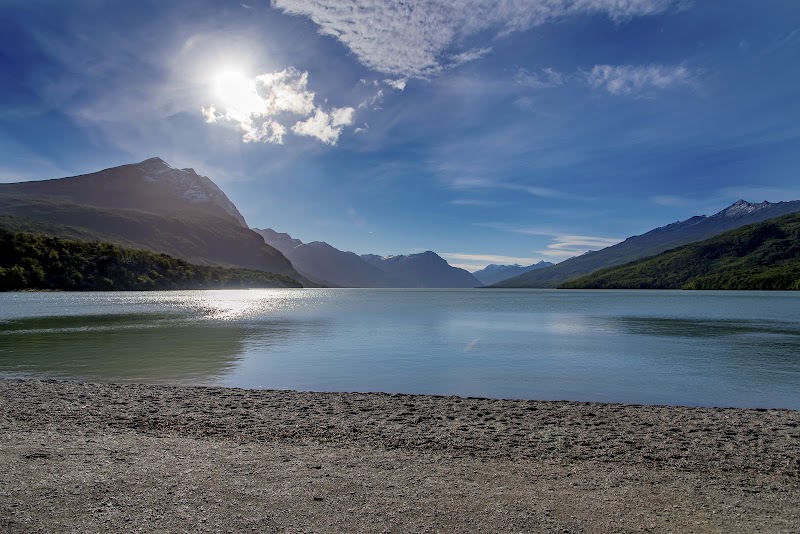
National Trekking Championship Ushuaia: Conquering The End Of The World On Foot
The National Trekking Championship in Ushuaia, Argentina, invites adventurers to engage with some of the southernmost landscapes on Earth. This challenging 25-kilometer trek weaves through rugged forests and steep ridges, offering a genuine test of endurance and respect for the fierce Patagonian wilderness.
Wear Trail Shoes with Firm Grip
The terrain varies from slippery moss to loose scree; sturdy footwear with excellent traction prevents slips and maintains footing on steep ascents.
Start Early for Optimal Light
Morning hours offer calmer winds and soft light for better visibility and photography; aim to start before 8 AM during summer months.
Hydrate Often and Carry Extra Water
The cold wind can mask dehydration; a hydration pack with at least 2 liters capacity is recommended to stay properly fueled throughout the trek.
Prepare for Sudden Weather Changes
Patagonia’s weather shifts rapidly; bring windproof and waterproof layers to stay comfortable and protected from unexpected rain or chill.
National Trekking Championship Ushuaia: Conquering The End Of The World On Foot
At the southern tip of Argentina, where the winds challenge every step and the landscape shifts sharply between dense forests and sweeping mountain vistas, the National Trekking Championship in Ushuaia attracts hikers looking to test their grit and skills. This competition isn’t a casual stroll—it’s a rigorous blend of endurance, navigation, and adaptability through terrain that refuses to be tamed easily.
Covering roughly 25 kilometers with an elevation gain of about 1,200 meters, the trek traverses patagonian lenga forests, rocky ridges, and glacial streams daring you to keep pace. The trail winds through Tierra del Fuego National Park, where the forest floor crunches underfoot, and the beech trees lean like old storytellers leaning into the wind. Rivers whisper a steady challenge, their currents pushing forward against the hikers’ ascent.
Expect technical sections that require sure-footedness: slippery moss-covered rocks, steep ascents with loose scree, and unexpected weather shifts that turn calm skies into brisk, biting winds. The championship tests your stamina as much as your plan—hydration, footwear, and weather-appropriate gear are critical. Breathable layers, strong boot traction, and a hydration pack can keep you steady. Timing also matters; the trekking season peaks during late summer (January to March), when daylight stretches and trails are most manageable.
While the race atmosphere pulses with excitement, the experience remains grounded in respect for the environment fiercely itself. Hikers learn to read the land, anticipating the turn of a ridge or the edge of a marsh before it arrives. It’s an engagement—between yourself, your gear, and the wild ground beneath.
For first-timers and experienced trekkers alike, the Ushuaia championship offers more than just competition. It delivers a chance to move through one of the world’s southernmost wilds on foot, learning its rhythm and challenges firsthand. Whether you're chasing a top finish or simply aiming to cross the finish line, the trek makes clear that here, nature isn’t something to conquer. It’s something to move with, step by gritty step.
Nearby Trips
All Adventures
Boat Charters
Water Activities
Adventures near Ushuaia, Argentina
Discover the unique and memorable adventures that make Ushuaia, Argentina special.
Frequently Asked Questions
What kind of preparation is needed before entering the National Trekking Championship?
Participants should build endurance through regular hiking and cardio workouts, practice technical skills like scrambling, and get familiar with backcountry navigation. Simulating challenging weather and terrain conditions is strongly advisable.
Are there water sources along the trek, or should I carry all my water?
Several clear streams cross the trail, but it’s safer to carry your own water and use filtration if needed, as depending on natural sources may be risky during the race when hydration needs spike.
Is previous mountain trekking experience necessary?
While not mandatory, hiking experience on variable terrain greatly improves safety and pace. The course includes steep ascents and descents demanding sure-footedness and stamina.
What wildlife can I expect to see on the trail?
Keep an eye out for Andean condors circling high above, guanacos grazing distant patches, and foxes darting near forest edges, all integral to the region’s wild character.
Are there any environmental rules participants must follow?
Yes, all competitors must practice Leave No Trace principles—pack out all waste, stay on marked paths to avoid erosion, and respect local flora and fauna without disturbance.
Where can I stay in Ushuaia before and after the trek?
Ushuaia offers a range of accommodations from cozy hostels to mid-range hotels, many within walking distance of gear rental shops and shuttle services to trailheads.
Recommended Gear
Trail Hiking Boots
Provides ankle support and grip needed for mixed terrain including wet rocks and loose scree.
Hydration Pack
Allows easy access to water and helps maintain hydration during long, strenuous sections.
Windproof Jacket
Crucial for protection against sharp Patagonian winds and sudden weather shifts.
Trekking Poles
Aid balance and reduce strain on knees during steep descents and uneven ground.
Local Insights
Hidden Gems
- "Mirador Lapataia—an isolated viewpoint offering unmatched views of the Beagle Channel."
- "Valle Carbajal—a lesser-trafficked valley just off the main route, rich with birdlife."
Wildlife
- "Andean condor"
- "Guanaco"
- "Fuegian fox"
- "Magellanic woodpecker"
History
"The trek runs through lands historically inhabited by the Selk'nam people and passes near old sites linked to early Patagonian settlements, connecting trail users to the region’s cultural roots."
